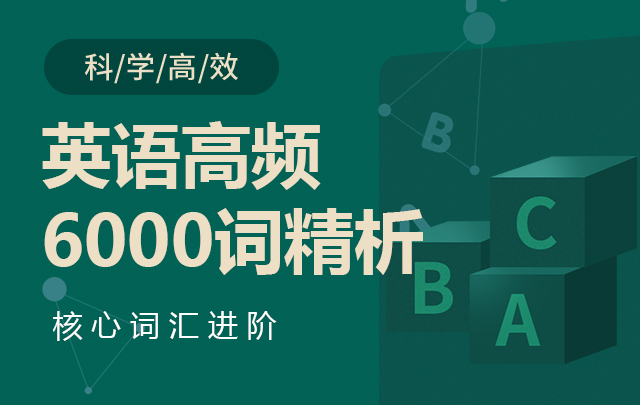Three Years after Pandemic, Students Still Far Behind
疫情三年后,学生们仍然落后很多
【听力音频】
--------------------------------------------------------------------------
By Dan Novak
26 December 2023
In the third full school year since the COVID-19 pandemic began, students continued to feel the effects of school closures. Some leading experts and education officials worry that the learning loss caused by the pandemic may be long-term.
Making matters worse, many students are missing school. Chronic absenteeism is becoming more common at school districts around the country. Some students went missing from the attendance rolls during the pandemic and have never been accounted for.
And in a year of growing artificial intelligence technology, AI has also entered the classroom. Some schools have banned the use of chatbots like ChatGPT. Other teachers are using the new technology to help students, hoping they use the technology in appropriate ways.
Here is a look at the big issues that shaped education in 2023 and will shape education in the year to come.
Continued learning loss
In June, the U.S. Department of Education released the scores from a national math and reading test that is given to 13-year-olds. About 8,700 students took the test in both math and reading in late 2022.
The results showed a drop of nine points in math and four points in reading compared to 2020, the last year the test was administered. The department's information shows that those are the largest point decreases between tests recorded since 1973.
The test asks students to read short passages and identify the main idea or some facts. In math, students had to answer simple multiplication and geometry questions.
The latest test scores show that American 13-year-old students are back to their lowest level in math since 1990 and lowest reading level since 2004.
Math and Reading scores were no better outside the U.S. Students around the world suffered historic setbacks in reading and math. That information comes from results of the latest Program for International Student Assessment (PISA).
The PISA is an international comparative study of the scores of 15-year-old students on tests in reading, math and science. It is administered by OECD. Nearly 700,000 students worldwide took part in the study.
PISA is given every three years. The latest results showed an "unprecedented drop in performance" since 2018. The 2022 results were released on December 5. It is the first extensive study with data on how the pandemic has affected student performance around the world.
The COVID-19 pandemic was a major reason for the worldwide score drops. But science and reading scores were dropping even before the pandemic. This suggests there are other reasons for the decrease.
Factors such as the level of investment in education, the social value and pay levels of teachers, and educational beliefs of students have all influenced educational results, OECD found.
Absent, missing students
Students are not going to make gains in learning if they miss school. Education officials and activists are concerned about an increase in the number of students who are absent for many days during the school year.
Education policy experts call the problem "chronic absenteeism." Chronic absenteeism is defined as missing more than 10 percent out of the days in a school year.
There are many reasons why students miss a lot of school. Certain physical problems and mental health problems, which have increased since the pandemic, are possible causes.
Certain community conditions also can affect attendance, says Joshua Childs, a professor of education policy at the University of Texas at Austin. These include whether a student has safe transportation to and from school and whether the school itself is a safe environment. Childs added that if families do not feel connected with the school community or do not value education that can add to absenteeism.
Hundreds of thousands of American students have also dropped out of public schools since the start of the COVID-19 pandemic. They have essentially gone missing from schools.
A recent examination found an estimated 240,000 students in 21 states whose absences from school could not be explained. These students did not move out of state. They also did not sign up for private school or home-school.
The issue of missing students received a lot of attention in 2020 after the pandemic closed schools around the country. In the years since, however, the issue has largely become a budgeting problem.
There is no longer urgency to find the students who disappeared from school. Early in the pandemic, school workers would go to the students' homes to try and help them return to the classroom. Most of those efforts have ended.
Changing technology
The COVID-19 pandemic showed how useful digital technology could be for schools. But it also showed the limitations of technology in the educational setting. Millions of students were able to attend classes online and avoid spreading the virus. But many students failed to learn by such methods.
The United Nations Educational, Scientific and Cultural Organization ( or UNESCO) argues against unsupervised wide use of digital tools and AI in education. A recent UNESCO report says there is little evidence that wide technology use improves learning.
The organization says digital educational tools can never replace the human connection of teacher and student. There is a very large divide, or gap, between rich and poor countries when it comes to digital resources
"Even if connectivity was universal, it would still be necessary to demonstrate ...that digital technology offers real added value in terms of effective learning," the UNESCO report says.
Many educators fear students will use the AI tool ChatGPT to write their reports or cheat on homework. New York City school officials started blocking the writing tool on school devices and networks in January. But other teachers are including it in the classroom.
Donnie Piercey is a teacher in Lexington, Kentucky. He told his fifth-grade students to try and outsmart the tool that was creating writing assignments. Piercey says his job is to prepare students for a world where knowledge of AI will be required.
He describes ChatGPT as just the latest technology in his 17 years of teaching that raised concerns about the possibility of cheating. Other tools include Google, Wikipedia and YouTube.
"As educators, we haven't figured out the best way to use artificial intelligence yet," he added. "But it's coming, whether we want it to or not."
I'm Dan Novak.
And I'm Anna Matteo.
Dan Novak wrote this story for VOA Learning English.
--------------------------------------------------------------------------
作者:Dan Novak
日期:2023年12月26日
自COVID-19疫情开始以来的第三个完整学年,学生们仍在感受学校关闭的影响。一些领先的专家和教育官员担心,疫情导致的学习损失可能是长期的。
更糟糕的是,许多学生正在缺课。在全国各地的学区,长期缺勤正变得越来越普遍。一些学生在疫情期间从出勤名单上消失,至今未能找到。
在人工智能技术日益发展的一年里,AI也进入了教室。一些学校禁止使用像ChatGPT这样的聊天机器人。其他教师则利用新技术来帮助学生,希望他们能以适当的方式使用这项技术。
以下是对2023年影响教育的重大问题以及将影响来年教育的问题的一些观察。
持续的学习损失,
在6月,美国教育部发布了一项全国性的数学和阅读测试的分数,这项测试是针对13岁的学生进行的。大约有8700名学生在2022年底同时参加了数学和阅读的测试。
结果显示,与2020年(这是最后一次进行测试的年份)相比,数学成绩下降了9分,阅读成绩下降了4分。教育部的信息显示,这是自1973年以来记录的测试之间的最大分数下降。
这项测试要求学生阅读短篇文章并确定主要观点或一些事实。在数学部分,学生需要回答简单的乘法和几何问题。
最新的测试成绩显示,美国13岁的学生的数学水平回到了自1990年以来的最低水平,阅读水平回到了自2004年以来的最低水平。
在美国以外,数学和阅读的成绩并没有好转。全球的学生在阅读和数学上都遭受了历史性的挫折。这些信息来自最新的国际学生评估计划(PISA)的结果。
PISA是由经济合作与发展组织(OECD)进行的一项关于15岁学生在阅读、数学和科学测试中得分的国际比较研究。全球近70万名学生参加了这项研究。
PISA每三年进行一次。最新的结果显示,自2018年以来,学生的表现出现了"前所未有的下滑"。2022年的结果于12月5日公布。这是第一项关于疫情如何影响全球学生表现的大规模研究。
COVID-19疫情是全球成绩下降的主要原因。但科学和阅读的成绩在疫情之前就已经在下降。这表明,成绩下降还有其他原因。
经济合作与发展组织发现,教育投资水平、教师的社会价值和薪酬水平,以及学生的教育信念等因素都影响了教育结果。
缺席、失踪的学生
如果学生缺课,他们的学习成绩就不会有所提高。教育官员和活动人士对在一个学年中有许多天缺席的学生数量增加感到担忧。
教育政策专家将这个问题称为"长期缺勤"。长期缺勤被定义为在一个学年中缺席超过10%的天数。
学生缺勤的原因有很多。自疫情以来增加的某些身体问题和心理健康问题可能是原因。
德克萨斯大学奥斯汀分校的教育政策教授乔舒亚·查尔兹表示,某些社区条件也可能影响出勤率。这些包括学生是否有安全的往返学校的交通工具,以及学校本身是否是一个安全的环境。查尔兹补充说,如果家庭不觉得与学校社区有联系,或者不重视教育,这可能会增加缺勤率。
自COVID-19疫情开始以来,成千上万的美国学生也已经从公立学校辍学。他们基本上从学校消失了。
最近的一项调查发现,在21个州中,有大约240,000名学生的缺勤无法解释。这些学生并没有搬离州,他们也没有报名参加私立学校或家庭学校。
2020年疫情关闭全国各地的学校后,失踪学生的问题引起了大量关注。然而,在过去的几年里,这个问题主要变成了一个预算问题。
寻找从学校消失的学生的紧迫性已经不再存在。在疫情初期,学校工作人员会去学生家中,试图帮助他们返回课堂。但大部分这样的努力已经结束。
技术的变化
COVID-19疫情显示了数字技术对学校的有用性。但它也显示了技术在教育环境中的局限性。数百万学生能够在线上课,避免病毒的传播。但许多学生无法通过这种方式学习。
联合国教科文组织(或称UNESCO)反对在教育中无监督地广泛使用数字工具和人工智能。联合国教科文组织最近的一份报告称,几乎没有证据表明广泛使用技术可以提高学习效果。
该组织表示,数字教育工具永远无法取代教师和学生之间的人际关系。在数字资源方面,富裕国家和贫穷国家之间存在着巨大的鸿沟。
"即使连通性是普遍的,我们仍然需要证明...数字技术在有效学习方面确实提供了真正的附加价值,"联合国教科文组织的报告说。
许多教育工作者担心学生会使用AI工具ChatGPT来写他们的报告或者作弊完成作业。纽约市的学校官员从今年1月开始在学校的设备和网络上屏蔽这个写作工具。但其他教师则将其引入课堂。
Donnie Piercey是肯塔基州列克星敦的一名教师。他告诉他的五年级学生试图智胜那个创建写作任务的工具。Piercey说,他的工作就是为一个需要了解AI的世界做好学生的准备。
他将ChatGPT描述为他教学17年来最新的一种引发关于可能作弊的担忧的技术。其他工具包括Google、维基百科和YouTube。
他补充说:"作为教育者,我们还没有找到最好的使用人工智能的方式。但无论我们是否愿意,它都会来临。"
我是Dan Novak。
我是Anna Matteo。
这个故事是Dan Novak为VOA学习英语写的。
--------------------------------------------------------------------------
故事中的词汇
chronic — adj. 长期的,反复出现的
absent — adj. 缺席的,不在预期或常在的地方
district — n. 政府为官方业务设立的区域
appropriate — adj. 适合某种目的或情况的
passage — n. 书籍、诗歌、演讲等的通常较短的一部分
unprecedented — adj. 前所未有的
access — n. 接近、到达或接触某物或某人的方式
universal — adj. 普遍的,大家都有的经历
cheat — v. 通常为了在某事上取得优势而违反规则或法律
assignment — n. 分配给某人的工作或职责:某人被要求完成的任务
figure — v. 通过思考理解或找出
本文关键字:
 免费试听
免费试听

时长 : 5:22 主讲 : 金格妃

时长 : 27:51 主讲 : 金格妃

时长 : 17:20 主讲 : 郭宁

时长 : 3:54 主讲 : 金格妃

时长 : 26:58 主讲 : 乔迪

时长 : 26:58 主讲 : 乔迪

时长 : 26:58 主讲 : 乔迪

时长 : 3:54 主讲 : 金格妃

时长 : 1:46 主讲 : 金格妃
 推荐阅读
推荐阅读
Webb Telescope Captures Images of 19 Spiral Galaxies 韦伯望远镜捕捉到19个螺旋星系的图像
来源 : 网络 2024-02-19 13:01:00 关键字 :
Student Academy Awards Provide ‘Momentum’ for Young Filmmakers 学生学院奖为年轻电影制作人提供“动力”
来源 : 网络 2024-02-19 11:48:00 关键字 :
Do You Have a Doppelg?nger ? 你有一个“分身”吗?
来源 : 网络 2024-02-18 11:37:00 关键字 :
Is Elon Musk Worth $55 8 Billion to Tesla?埃隆·马斯克对特斯拉来说价值558亿美元吗?
来源 : 网络 2024-02-18 11:32:00 关键字 :
Remembering Chita Rivera 记忆中的奇塔·里维拉
来源 : 网络 2024-02-16 11:26:00 关键字 :
Women to Take Center Stage at the Grammys 女性将在格莱美奖上占据主导地位
来源 : 网络 2024-02-16 11:20:00 关键字 :
Reduction and Assimilation 音节减少和同化
来源 : 网络 2024-02-15 11:13:00 关键字 :
Why Is Canada Limiting Foreign Students? 为什么加拿大要限制外国学生?
来源 : 网络 2024-02-15 11:07:00 关键字 :
It Has Never Been More Costly to See the Super Bowl 观看超级碗的费用从未如此高昂
来源 : 网络 2024-02-14 11:02:00 关键字 :
Australian Filmmaker Shows Japanese Single Mothers, Children Face Poverty 澳大利亚电影制片人展示日本单亲妈妈和孩子面临贫困的情况
来源 : 网络 2024-02-14 10:55:00 关键字 :


 精品课
精品课
价格 : 0元
限报人数:1000人
价格 : 0元
限报人数:1000人
价格 : 0元
限报人数:1000人
价格 : 0元
限报人数:1000人
 阅读排行榜
阅读排行榜
 相关内容
相关内容